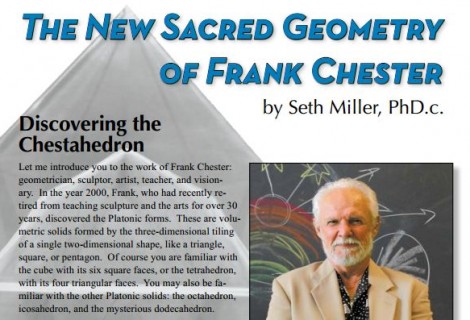An Esoteric Guide to Spencer Brown’s Laws of Form #5
« Previous Page | 1 2 3 4 5 | View All | Next Page »
I’m going to let GSB’s own remarks on space and time stand without further exploration, although I don’t imagine it needs to be pointed out how central the concept of vibration (and rhythm) is to esoteric work. Rather, I’m going to get back to LoF and continue with commentaries on chapter 12, where he summarizes the whole work.
LoF p. 69
- The conception of the form lies in th e desire to distinguish.
Esoterically, all knowing, all epistemology, always includes the WILL; i.e. activity; it is never passive.
LoF p. 69
- Granted this desire, we cannot escape the form, although we can see it any way we please.
The form can be anything in terms of its manifestation, but to get from the second order level to the first REQUIRES that a form be chosen. In other words, the first distinction is always dual: it is both the distinction of a particular FORM of distinction (from all the other possible forms of distinction), and it is also the distinction of distinction itself. This is to say, the first distinction is recursive, having both a first and second-order nature. The recursion is particular: it is between the first and second orders of the distinction. This means that the process of making the first distinction is the content of the first distinction. In other words, the first distinction is simultaneously ontological and epistemological: what is distinguished IS (ontologically) DISTINGUISHED (epistemologically). The form is recursive: what is distinguished is distinguished by what is distinguished by what is … and so on. This should all make sense now.
LoF p. 69
- The calculus of indications is a way of regarding the form.
But there are many/infinite ways of regarding the form. This is a necessary correlate to the 1st/2nd order recursion of the first distinction. That is to say, freedom is both an epistemological and ontological reality: the content of the form and the coming into being of the form are not arbitrarily bound, except to that very fact (their recursion with each other as we have already seen).
LoF p. 69
- We may also note that the sides of each distinction experimentally drawn have two kinds of reference.
- The first, or explicit, reference is to t he value of a side, according to how it is marked.
- The second, or implicit, reference is to an outside observer. That is to say, the outside is the side from which a distinction is supposed to be seen.
In other words, every distinction implies more than the distinction, but also that which distinguishes. Alternately, we can say that behind every distinguished space lies another space, as yet undistinguised, but potentially distinguishable. Esoterically, this is recognition of a hierarchy of epistemological and ontological levels. Included is the implication that to distinguish the space from which a distinction is made requires a transformation, whereby the new distinction occurs from outside the original space. I.e. the distinction must come from further “outside” the space. In esoteric traditions this can be expressed in different ways, but the most directly cognate is Sri Ramana Maharshi’s question: “Who is asking the question?”. The recognition here is that one can directly address (and thus work on, train, implement) the potential to distinguish a higher space from which a distinction is made, and so on.





